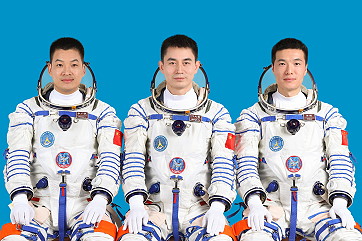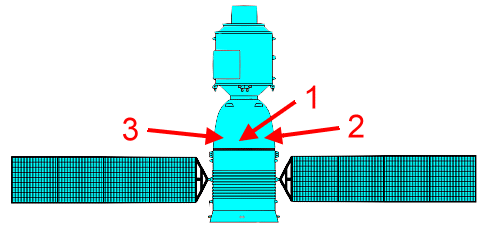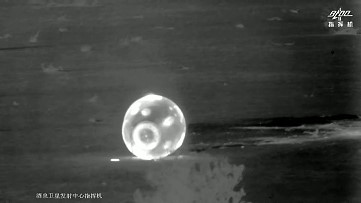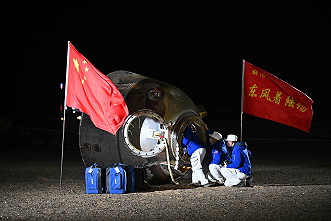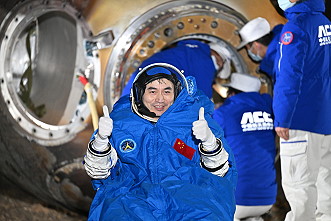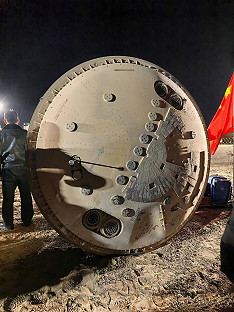Launch from Jiuquan Satellite Launching
Center. The landing was at the "Eastwind Landing Site" (Dongfeng Zhuoluchang),
249 km northeast of Jiuquan.
The
Tiangong space station (English: Heavenly Palace)
can accommodate three astronauts under normal circumstances and up to six
during a crew change. The station will be T-shaped with the core module in the
middle and a laboratory capsule on each side. Each of the modules will weigh
more than 20 tons, with a total mass of the station of about 66 tons. The space
station, which is expected to be completed in 2022, is expected to operate for
more than 10 years in low-earth orbit at an altitude of 340 km to 450 km.
The station's core module, named
Tianhe (English: Heavenly Harmony), has a total
length of 16.6 meters, a maximum diameter of 4.2 meters and a launch mass of
22.5 tons and is currently the largest spacecraft developed by China. The
Tianhe core module will be the management and control
center and the main living room of the crew, and will support some science and
technology experiments. The living space in the core module is approx. 50 cubic
meters. In combination with the two laboratory capsules, the total living space
could be up to 110 cubic meters, according to the China Academy of Space
Technology (CAST). The core module has two berth connections connected to the
two laboratory capsules and three docking connections for the spaceship, cargo
and other crew vehicles. It also has an exit for astronauts to conduct
extravehicular activities.
The first laboratory capsule, named
Wentian (English: Sky Inquiry), is mainly used for scientific and
technological experiments, as well as for work and living spaces and emergency
shelters. This capsule is equipped with a special airlock chamber to support
extravehicular activities and a small mechanical arm for the automatic
installation and operation of instruments on the shell of the space
station.
The second laboratory capsule, named
Mengtian (English:
Heavenly Dream), has similar functions to the first laboratory capsule. It is
equipped with a special airlock chamber that supports the entry and exit of
cargo and instruments with the help of astronauts and mechanical arms.
The
Long March-7 rocket and the
Tianzhou (English: Sky Ship) cargo spaceship are
used to transport materials, propellants and instruments for the station.
The Long March-5B rocket will launch the core module and laboratory capsules,
as well as a capsule with a 2-meter caliber optical telescope, which will fly
in the same orbit as the space station. The telescope capsule, named
Xuntian (English: Sky Survey), is designed to provide observational data
for astronomical and physical studies to enable scientists to better understand
the universe. It can observe over 40 percent of the sky during its expected 10
years of operation. The capsule can dock with the space station for maintenance
and refueling.
Following docking to
Tiangong the astronauts became
Crew-6 and later
Crew-7.
![]()


![]()
